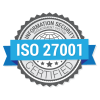You’re probably expecting an answer that involves AI, Machine Learning, <insert fancy tech here>.
Well, yes. But instead of “sprinkle fairy dust, magic happens”, we have a more comprehensive breakdown of the capabilities involved in this article.
Cost optimization solutions are becoming increasingly popular as companies look to reduce expenses and improve their processes to analyze data and identify areas that can be optimized.
While many of these solutions utilize AI and machine learning technologies, there is much more involved in the process than simply relying on these tools to magically optimize costs. These solutions are made to be the “secret weapon” of managers and directors in procurement and IT roles.
With the insights the solution is able to generate, these executives can simply gather the relevant stakeholders into a room once a month, review the opportunities found, and discuss the merits and strategy of each opportunity without having to worry about the underlying analytics.
Why would they trust the tool so blindly? Because these solutions utilize 5 key capabilities that guarantee accuracy and consistency in their findings. When these 5 capabilities work together as one cohesive system, you are able to rely upon your cost optimization solution to be your trusted advisor – always prepared with full context and the detailed facts needed to make strategic or operational decisions while passing on implementation instructions accurately. They are:
1) Document Extraction
2) Semantic Modelling
3) Domain Logic
4) Quality Assurance
5) Data Presentation
Document Extraction
1) A Document Extraction capability needs to be able to extract data from any document format, in any language, including both structured and unstructured data. An OCR (or Intelligent Document Processing) capture this information, but these technologies may fall short when dealing with long documents (100 pages+) or complex types of information. In that case, they end up needing to accurately pull out every entity from these documents and correctly associate them, which adds time and complexity to the process.
There are various technologies in the market that specialize in different capabilities, such as AWS Textract, which is strong with key-value pairs, and Azure Form Recognizer, which is strong with tables and multi-languages, but it’s hard to find a tool in the market that can capture accurate complex information from any document format (no matter how long), in any language. Optimization solutions like Thinking Machine have that.
Semantic Modelling
2) Moving on from the data extraction phase, the next step is Semantic Modelling. This involves creating a data model that can handle the nuanced definitions and technical jargon that are often used in vendor products. Without a robust data model, manual annotation becomes necessary, which can be time-consuming and costly. The Semantic Modelling Needs to know what to do with the data it extracts.
Domain Logic
3) We got the data in one place. Now what? There needs to be a specific Domain Logic, where the solution knows how to turn the data it has extracted into actionable insights. For example, the logic for professional service contracts will be different from the pricing logic for telecom services. Therefore, domain-specific logic is needed to ensure that the results are accurate and meaningful.
Quality Assurance
4) We got results but are we sure of it’s accuracy? Quality Assurance is another critical capability that is required in cost optimization solutions. With so many steps being taken with the data, it is essential to have a robust framework of data quality checks to ensure that the results are accurate. This includes techniques such as data profiling, data cleansing, and data validation.
Data Presentation
5) Finally, the results need to be presented in a way that is clear and easy to understand. The Data Presentation capability involves making sure that the results are put into context and presented in a way that the end-user can be confident in and execute. The solution needs to present insights in a way that allows for action to be taken to optimize costs and improve the overall process.
And Voila! A state of the art optimization solution is born to solve your business needs. A quick side-note for those worried about AI coming for their job. The truth is that procurement analysts are not trained to perform the type of data analysis that a cost optimization solution does. The cost optimization solution looks for solutions that touch multiple departments and are specialized to deal with the nuances of technical domains like Data Centers, Telecom, Networking etc. In other words – you can’t replace a job that no-one was doing in the first place!
While AI and machine learning are often used to improve the efficiency of cost optimization solutions, it is impossible to dispose completely of the human effort side of the process. Internal teams working together on the insights found by the solution and feeding the right data into it are still indispensable to the success of the results. AI and machine learning can only go so far in terms of automating the process of cost optimization. It is human effort that designs the solution and ensures its accuracy, making sure that the solution is aligned with the business goals and objectives of the organization.


